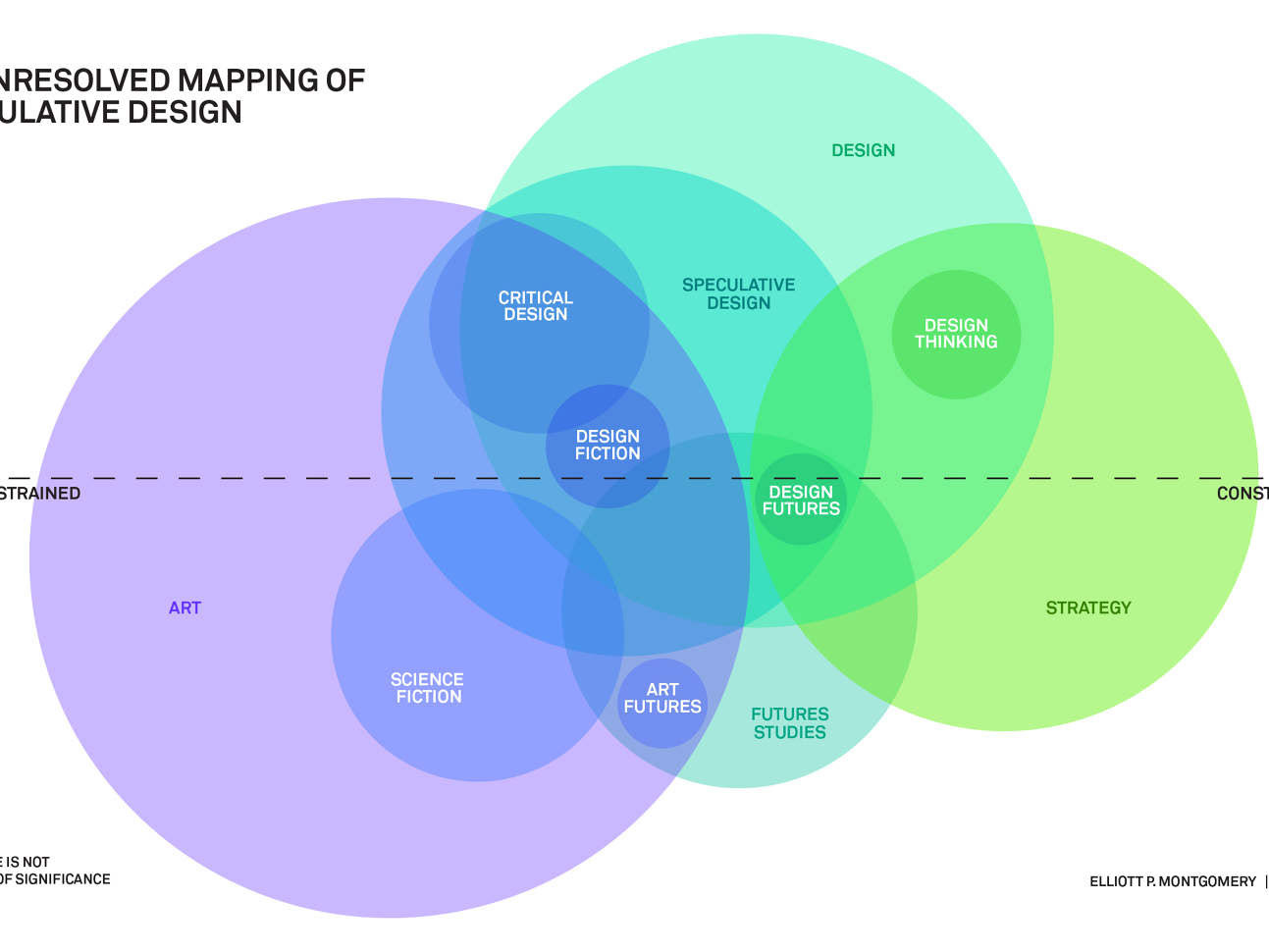Reclaiming Creativity: Why Tactile Tools Deserve a Place in the Modern Design Processes
© Transdisciplinary Design MFA Class of 2022–23 Parsons School of Design
The design world has undergone a complete transformation with the introduction of new tools. Collaboration has reached unprecedented heights with digital software like Figma, Miro, and Notion allowing teams to work together regardless of geographical location in real time. These changes may have reduced time it takes to design, but efficiency is not without its compromises. The deeper issue is the creativity void caused by physically engaging with tools. Although digital tools facilitate coordination on a larger scale, collaborating fails to embody the rich emotions and cognitive warmth associated with the act of touching. One must ask whether modern progression is an endeavor worth sacrificing enhanced mental stimulus.
The Constraints of the Pixel-Based Processes
The value of collaborating with digital tools is unquestionable as they democratize the environment, are easily transportable, and allow easy integration for remote teams. However, these tools lack in producing accurate results. Think about a designer’s 13-inch screen as a digitally facilitated work environment. The fenced space leads to a designer needing to zoom and better fragment ideas for presentation. Contrasting this is a 5x10-foot research wall which allows for sticky notes, photos, and sketches collectively housed within the vast physical space.
Our cognitive abilities recognize patterns from the physical realm, and memories are stored effectively, all thanks to the innate ability we have of associating concepts with spatial locations, as indicated in research regarding self-displays [1]. To an extent, digital whiteboards serve their purpose, however, they lack depth. They conceal surprise connections that happen when people step back and look at the problem.
Even collaborative practices such as workshops suffer greatly. A World Café, a model where attendees move from one table to another to build upon the ideas, has lost its liveliness on Zoom. Scooting across the office space, the passing of sticky notes from one hand to another, as well as the ambient sound of multiple discussions happening simultaneously, has been traded in for grid views and breakout rooms. Prepared by the MIT’s Human Dynamics Laboratory, Collaborative Innovation Study shows that in-person groups bring more devising teams because capture-replay techniques are towards richer feedback regions and subtler non-verbal communications involving gestures and the intimate space bubbles of participants enhance functioning [2]. These forms of technology strip away all of these nuances, giving the impression that projects are being completed because they must rather than based on actual interest.
© Transdisciplinary Design MFA Class of 2022–23 Parsons School of Design
The Cognitive Power of Pen and Paper
For years, designers have used basic, low-technology tools of various forms to help them think. Sketching is not just putting pen to paper, it is a dialogue with oneself. From the friction of a pencil to paper, producing a draft allows one to take chances. Psychologists call this the “generation effect”: We remember and understand concepts with stronger recall if we participate in generating them rather than passively consuming them [3].
This is not nostalgia, it’s neuroscience. A 2014 study in “Applied Cognitive Psychology” found that sketching enhances problem solving and creative insight, as the brain’s visuospatial networks are activated [4]. With menus, layers, and redo options, cognitive load is created. To quote designer Milton Glaser, “there’s a moment when you have to stop thinking and start drawing.” Mark wireframing for instance: dragging Figma components could seem effortless and efficient, yet ideation at earlier stages relies on ambiguity. A rough “sketch” is more manageable regarding reinterpretation. A simple squiggle can convert to a button, then a menu, and then become an ‘experiment’ that is discarded. On the other hand, digital equipment push toward early stages of excessive finish. “Low-resolution prototypes,” as they are referred to by IDEO’s Tom Kelley who explains how they accelerate innovation and encourage participation from non-designers who feel less intimidated by imperfection [5].
The Case for Hybrid Workflows
These tools don’t have to be abandoned. What we need are hybrid workflows that respect the benefits of both analog and digital systems. Look at design studios like Airbnb and Google Hardware Team. They incorporate tactile techniques into their work, for example:
Sprint kickoffs where participants use Sharpies and storyboards to mitigate “blank screen paralysis.”
Rapid spatial brainstorming sessions involving design libraries where printed UI components are physically made available for use.
Digitally projected critiques where hand-drawn illustrations accompany the digital versions of the models, blending detail-oriented and abstract thinking.
Even distributed teams can find a way. Mailchimp design team, for example, sends remote participants “analog kits” containing markers, sticky notes, and other materials so they can participate in real time sketching sessions [6]. These efforts can be counterproductive, such as using Miro’s “virtual sticky notes.” Designer Bret Victor warns us that “when we exchange our hands for a mouse, we give up the genius of our fingers” [7].
The Cost of Ignoring Tactility
Sticking strictly to digital comes at a cost. Ideas are homogenised and creativity lost since the broadening magic of divergent thinking is stifled. d.school highlights that “design thinking” starts with empathy and an experiment, not software. [8] Empathy is captured with tactile tools that allow stakeholders to actively and collaboratively engage to write, fold, and even rearrange to form structures. It’s not just charming that a CEO can scribble on a napkin. That forms a meshing cognitive act which aligns teams far beyond what the polished slide deck could achieve.
Also, creative breakthroughs put the supposed efficiency myth to rest. Teams that employed mixed analog/digital techniques generated 30% more feasible concepts than the all-digital groups, as discovered in a 2017 Design Studies journal article. [9] While speed is important, depth also holds value.
Relearning How to Make
As design engineers, we wouldn’t just want to hand pixels out, our duty is to foster approaches to think in more constructive ways. This means resisting the dangerously appealing option of going digital by default. Start small:
1. Start with analog. To design wireframes, grid notebooks can be used while printed screens can be altered by tracing to form various versions.
2. Run physical workshops. Kits for remote collaboration sessions can be mailed to any participant ensuring seamless interaction.
3. “Wabi-Sabi” prototyping, the acceptance of rough drafts, gets crumpled, coffee stained, and worn beauties loved.
Intentionality is what drives design and not the tools used and so the lines don’t exist as to what guides the future of design.
References
[1] Kirsh, D. (1995). The Intelligent Use of Space. Artificial Intelligence.
[2] Pentland, A. (2012). The New Science of Building Great Teams. Harvard Business Review.
[3] Slamecka, N. J., & Graf, P. (1978). The Generation Effect. Journal of Experimental Psychology.
[4] Kelley, T. (2001). The Art of Innovation. Currency Books.
[5] Fernandes, M. A. et al. (2014). The Benefits of Sketching for Memory. Applied Cognitive Psychology.
[6] Mailchimp Design Blog (2020). Remote Design Sprints: Lessons from a Distributed Team.
[7] Victor, B. (2011). Drawing Dynamic Visualizations. Worrydream.com.
[8] Stanford d.school (2010). Bootcamp Bootleg.
[9] Pei, E. et al. (2017). Analog vs. Digital Ideation. Design Studies.
[2] Pentland, A. (2012). The New Science of Building Great Teams. Harvard Business Review.
[3] Slamecka, N. J., & Graf, P. (1978). The Generation Effect. Journal of Experimental Psychology.
[4] Kelley, T. (2001). The Art of Innovation. Currency Books.
[5] Fernandes, M. A. et al. (2014). The Benefits of Sketching for Memory. Applied Cognitive Psychology.
[6] Mailchimp Design Blog (2020). Remote Design Sprints: Lessons from a Distributed Team.
[7] Victor, B. (2011). Drawing Dynamic Visualizations. Worrydream.com.
[8] Stanford d.school (2010). Bootcamp Bootleg.
[9] Pei, E. et al. (2017). Analog vs. Digital Ideation. Design Studies.

